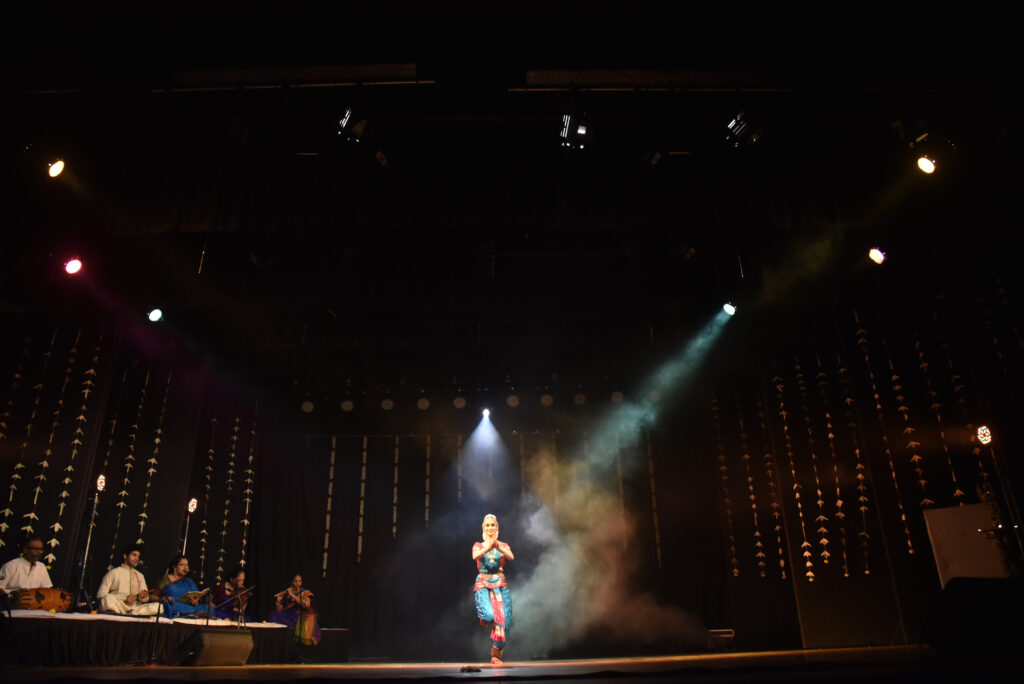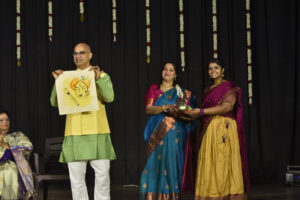So, the date’s set. The rehearsals are on track. The live orchestra is confirmed. Now comes the part that can either elevate your entire performance or… well, leave you adjusting pins and pleats mid-stage — the arangetram dress.
Here’s the thing. Picking a Bharatanatyam costume isn’t just about colours or shine. It’s about comfort, tradition, grace, and stage presence. And it’s often the most overlooked part of preparation until it’s too late. Let’s make sure that doesn’t happen.
Whether it’s your debut or you’re helping someone prepare for theirs, this guide will help you spot (and skip) the common mistakes dancers make when choosing their arangetram dress.
Why Your Arangetram Dress Matters More Than You Think
It’s easy to underestimate the power of your outfit in a performance that’s supposed to be all about rhythm, story, and emotion. But that’s where most dancers go wrong.
Here’s why your Bharatanatyam dress is so important:
- It impacts how your movements are perceived.
- It adds to your emotional confidence.
- It represents your dedication to the art.
- It contributes to visual storytelling.
And that’s just scratching the surface.
Now let’s walk through the common pitfalls — and how to avoid them.
1. Picking the Wrong Fabric
That silk costume you’ve had your eyes on? Stunning. But if it’s too stiff or doesn’t breathe, you’ll regret it 15 minutes into your arangetram dance.
Avoid:
- Heavy, non-breathable materials
- Low-quality blends that irritate skin
Instead:
Go for pure silk or cotton-silk blends stitched for movement. If you’re ordering online, confirm the fabric type and reviews first.
Explore better-stitched options at Shanthi Tailors and Dance Costumes and Jewelry.
2. Ignoring Dress Fit and Stitching
Here’s a simple truth: even the best fabric will fail if it’s not stitched right. A poorly fitted dress can restrict movement, create stage mishaps, or worse — distract your focus.
Watch out for:
- Poor hip pleat structure
- Loose sleeves that slide off
- Poorly aligned borders
- Choli fitting issues
Avoid rush jobs. Always do a trial session in full costume and get adjustments done well in advance.
3. Forgetting Jewellery Compatibility
The jewellery is not an afterthought. It’s what completes the transformation into the Bharatanatyam persona.
A mismatch between Bharatanatyam dress and jewellery can look off on stage — and more so in photos.
Checklist:
- Stick to traditional temple jewellery
- Match gold tones with dress borders
- Secure headpieces and earrings properly
If you’re wearing large jhumkis or nets, do a hair trial with them beforehand. Always.
4. Choosing Style Over Function
A flashy costume with heavy embellishments might look great in photos. But on stage? It can be a literal pain — chafing, snagging, or making you trip mid-pose.
Function comes first. Every time.
Avoid:
- Overly tight pants that restrict leg lifts
- Thick borders that create friction burns
- Decorative add-ons that fall off
Go for structure and breathability. Performance comfort is non-negotiable.
5. Waiting Too Long to Order
This is a rookie mistake — assuming stitching will be fast or tailors won’t be backed up. But the reality? Costumes get delayed. Especially during performance seasons.
Plan your order at least 3 months in advance. If you’re in the US, Canada, or anywhere overseas, add more buffer time.
Shanthi Tailors and Adarsha Dress Palace are both good places to start if you want custom fittings and faster service.
6. Overlooking Arangetram Dress Colour Psychology
Yes, you want your favourite colour. But also think about the lighting, stage decor, and symbolism.
Red is powerful but intense. Green feels fresh. Blue brings calm. Yellow pops on stage.
Still, stay close to traditional hues. And avoid colors that clash with your backdrop. Ask your decorator or refer to past shows for cues.
7. Skipping a Full Costume Rehearsal
You’ve done your studio rehearsals. But have you really danced in your full dress with jewellery, hair, and flowers?
Not doing this is like running a marathon in new shoes. Not recommended.
Use your checklist:
- Dress + Innerwear + Pins
- Jewellery + Flowers + Bindi
- Anklets + Make-up + Hair support
Try this at least twice before the actual day. Once at home. Once at the actual venue.
8. Not Practicing Quick Dress Fixes
What if your hip fan droops mid-varnam? Or a safety pin pops open before thillana?
Practice some emergency moves:
- How to re-pin pleats without removing the whole dress
- How to fix a falling headpiece in 10 seconds
- What to do if a blouse hook breaks backstage
It helps to carry an arangetram checklist with you. Ragam & Thalam has a full one here: Arangetram Preparation Checklist 2025
9. Not Accounting for Stage Light Reflection
Stage lighting can either make you glow or wash you out. And fabric sheen plays a big role.
Avoid overly shiny silks or reflective materials. They bounce too much light and blur photos.
Always test your costume under warm spotlights. Or better — bring a flashlight to your last rehearsal and check how the pleats, blouse, and ornaments behave under it.
10. Copying Another Dancer’s Look Exactly
It’s tempting to copy an older dancer’s costume that looked amazing. But your personality, body type, and performance style may be completely different.
Get inspired — but don’t replicate. Your arangetram dress for girl should reflect your journey.
Speak to your Guru, parents, and tailor. Personalize it.
Add-On Tips: Make-Up, Hair & Draping
Here’s a quick list of what many forget:
- Do your make-up procedure trials at least a week early.
- Practice eyeliner and lipstick for performance lighting.
- Make sure your hair bun is secure even with vigorous head shakes.
- Use extra pins to anchor your saree pleats to the blouse.
- Always carry a backup bindi, lipstick, and safety pins.
Real Talk: How Dancers Feel After Getting It Right
When your outfit sits right and makes you feel like a queen — everything changes.
You walk differently. You hold your spine taller. You become the character you’re portraying.
Dancers who get their dress right report:
- Higher confidence during abhinaya segments
- Fewer last-minute panics
- Better focus on actual dance rather than fixing things
FAQs
How much does an arangetram dress cost on average?
The arangetram dress price typically ranges from ₹5000 to ₹15,000 depending on fabric, stitching, and customization.
Can I rent an arangetram dress instead of buying?
Yes, but it’s better suited for practice sessions or group performances, not your solo debut.
What’s the best dress colour for arangetram?
Maroon, red, mustard, green, and royal blue are popular traditional colours that look stunning under lights.
Is temple jewellery necessary or can I use imitation?
Imitation is fine — as long as it looks traditional and is stage-worthy.
Where can I get stitched Bharatanatyam costumes online?
Check Dance Costumes & Jewelry and Shanthi Tailors for high-quality options.
Ready to Finalize Your Arangetram Dress?
Avoid the last-minute stress. Start early. Think beyond looks. Focus on what supports your performance, not distracts from it.
Need help planning your entire event? Explore all our offerings at Ragam & Thalam Services.
Make your first solo truly unforgettable — with a dress that honours tradition and feels like you.





